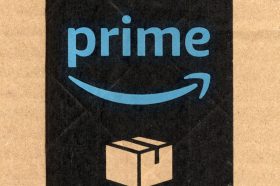Resources - Blog
2018 Amazon Prime Day Virtual Round Table Recap

Stay on top of the latest e-commerce and marketplace trends.
In an effort to help sellers think about Prime Day now in order to set themselves up for success in the coming month, a group of well-versed industry thought leaders got together for an Amazon Prime Day virtual round table webinar. The marketplace experts provided insider tips to help sellers optimize their Prime Day experience. Speakers included the following e-commerce professionals:
- Head of Marketplace Strategy at CPC Strategy – Pat Petriello
- Marketplace Channel Analyst at CPC Strategy – Jennifer Acosta
- CEO at Jungle Scout – Greg Mercer
- Co-founder and CEO at Skubana – Chad Rubin
- Customer Success Manager at Feedvisor – Aaron Ellis
Marketplace Updates
Why are we talking about Prime Day now? The reason why there is buzz surrounding Prime Day now is because it is relevant now, and the experts shared that sellers cannot think about Prime Day as a singular day, but rather as an entire month. It is one of the most important time periods on the selling calendar and if history is any indication, the event will likely fall on Tuesday, July 10th and extend for more than 24 hours.
As alluded to above, the “lead-up” and “lead-out” of Prime Day are just as important as the actual day. Everything that sellers can do between today and Prime Day to prepare are lead-up activities and after Prime Day is over, the actions that sellers take to continue the momentum are lead-out activities. In order to help sellers get a handle on how important the lead-up and lead-out are, one of the speakers mentioned that on Prime Day itself, he sold 3.4x as many units as the previous week and the day after Prime Day he sold 2x as many units as the previous Wednesday. It’s important for sellers to optimize their listings now so they are ready to convert well in advance of the event.
Since last year, the Prime membership has grown tremendously, with over 100 million Prime subscribers globally and nearly 80 million of them in the U.S. alone. Sellers are eager to get in front of this audience, as they are more than twice as likely to shop online daily than non-Prime customers. The total sales from Prime Day have increased year over year since the global shopping event started in 2015, surpassing $2B in 2017.
With regard to profit margins, the average margins dropped around 2%, but the decline was slow and carried through about two or three weeks into the end of July. Sellers can expect their margins to get pulled down, as other merchants are getting rid of product aggressively. However, as the shift to e-commerce continues, sellers are becoming more aware of the e-commerce ecosystem and are understanding how to implement strategic price drops that will work to their advantage on a high-traffic holiday such as Prime Day.
Additionally, the experts mentioned that there are more Sponsored Products Ads placements this year versus last year, which illustrates that sellers understand that the marketplace landscape is different than 2017 and those changes have informed their advertising strategy. Amazon Stores (the replacement of Brand Pages) also didn’t exist at this time last year.
Positioning Your Branded Content
The Amazon marketplace experts from Feedvisor, CPC Strategy, Jungle Scout, and Skubana explained that sellers shouldn’t think about Prime Day as a profit center, but rather as a marketing event. It’s an opportunity to increase velocity and sales volume, get your product exposed to new customers, and understand shopper intent to better target and attract customers that are ready to make a purchase. For headlines, be sure to use actionable phrases such as “new,” “exclusive,” “buy now,” and “save now” in order to urge shoppers to convert.
There are many ways that sellers can inform the customer and tell the story of their products and brands in order to help them make their decision:
- Amazon A+ Content – This content sits below the fold on a vendor page and integrates rich images, charts, and copy on your product detail pages to help customers make more informed buying decisions and drive brand affinity.
- EBC – Enhanced Brand Content enables brand owners and third-party sellers to modify the product description field of their branded ASINs and describe their product features in a different way by including a unique brand story, enhanced images, and text placements.
- Amazon Stores – Sellers need to be brand registered in order to have an Amazon Store. They can design and create multipage catalogs to showcase their products and unique value proposition to shoppers. Each Amazon Store can have three levels with multiple pages at each level (including a homepage, category page, and product detail page). On Prime Day, sellers can create a store page to highlight ASINs that they will be featuring for deals, such as on sale products.
Amazon creative content is especially impactful on Prime Day, as there are a lot more customers browsing the marketplace and shopping specifically for deals. The budget that you allocate toward content will depend on the size of your operation and your business goals. The round table experts also recommend that sellers freshen up their pay-per-click campaigns and find new keywords to target now, so that you aren’t scrambling right before Prime Day.
Establishing Pricing and Inventory Strategies
When planning how much to increase your inventory count by, Chad Rubin at Skubana recommends that sellers should analyze their sell-through on Amazon and understand what their sessions were during the previous year in order to figure out how much stock they need to have in place.
With regard to pricing, Feedvisor’s very own Aaron Ellis explained that sellers need to understand the importance of the 80/20 rule, which is the industry rule of thumb that 20% of your selling items generate 80% of your sales, give or take. With the example of 1,000 selling SKUs, the top 200 SKUs (20% of your catalog) most likely generate about 80% of sales. The number of top selling items will vary depending on several factors, such as the size of your business and what items you are selling.
For competitive pricing, sellers should drop their floor prices in order to get rid of as much inventory as possible. Understanding your best products closely and having a portfolio management strategy will help you give preferential price treatment to the items that will move the needle. During the Prime Day season more than ever, sellers need to pay attention to how they reprice in order to maximize their chances of holding on to Buy Box share. After all, the shopping holiday is about moving products, so if you are getting the clicks on Prime Day and are in stock through the post-Prime Day acceleration, you will be set up for success.
Learn what Feedvisor can do for your business.
When you partner with Feedvisor, you automatically receive access to our true, AI-driven technology and hands-on team of e-commerce experts. Contact one of our team members today to learn more about our end-to-end solution for brands and large sellers on Amazon, Walmart, and e-marketplaces.



